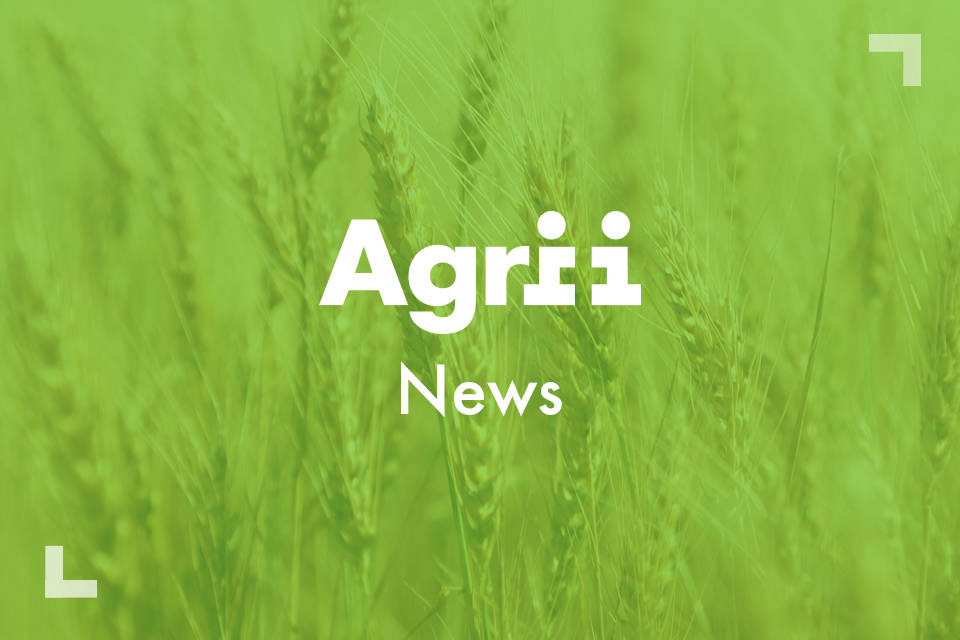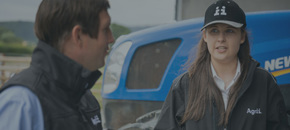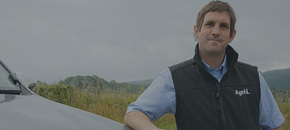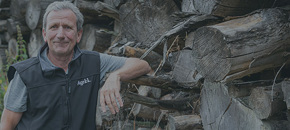
Farming for the Future: The Carbon-Cutting Potential of Incorporating Pulses and Legumes
News - 06.03.24
Agrii Tramlines Podcast | Season 3, Episode 23
Agriculture is a very significant emitter of carbon dioxide.
Below is a summarised transcript for our recent Tramlines Podcast episode talking about an innovative project called the Nitrogen Climate Smart Project, which aims to bring about a reduction of 1.5 million tonnes of carbon dioxide emissions per annum.
The aim is to increase post and legume cropping and arable rotations to 20%, the benefits of which to both arable and livestock enterprises could lead to cost savings of over  £1,000,000,000 per year.
Let's find out more about this innovative project and what it could mean for your farm business.
Featured in this episode/article

Lucy Cottingham
UK Digital Agronomy Manager

Steve Portas
Agronomist and Technical Advisor

Josh Murphy
RHIZA Product Manager
What is the NCC project, what it is about, how it is funded and what its aims are?
[Lucy]
The Nitrogen Climate Smart project is a £5.9 million farmer led research project, funded through Innovate UK. It was launched last year. The project has funding for four years in total and it involves 18 industry partners from a number of different organizations.
We are leading the project in conjunction with academic organisations and a number of different companies that are experts in the arable and livestock sectors. There's a huge element of farmer involvement in this as well. We've got around 200 farmers involved in the project.
The main aims of the project are to reduce carbon emissions within agriculture, with the focus on delivering more than half of the greenhouse gas emission reduction targets for UK agriculture. The way in which we're going to do this is to increase pulse and legume cropping in arable rotations to 20% across the UK, which currently sits at 5%.
The main reasons behind doing this and how we're going to do it relates to the current use of artificial fertiliser - a huge contributor to carbon emissions. We know that as an industry we need to make changes to reduce this. And we know that pulse and legume crops don't have a need for application of artificial nitrogen as they fix their own nitrogen. So if we can increase pulses and legumes in the rotation, we don't need to be putting this nitrogen on.
The second side of the story is that as a country we import a huge amount of soya from Argentina, Brazil, and the US for protein sources for livestock feeding. So if we can look to grow our own protein sources for livestock rations, there's a huge reduction in carbon emissions from not needing to import so much over to the UK.
What are the other agronomic benefits of pulse crops that we really need to take note of?
[Steve]
One of the main benefits is that pulses give the biggest boost to the aid of the following crop, which is usually cereals, specifically wheat. The pulses will provide around 50 to 70 kilos of nitrogen that they've fixed and is available to the following crop giving a really good yield boost, sometimes to the tune of two tonnes per hectare.
Given the many benefits, why aren't we growing more pulses currently?
[Steve]
I think I guess because they've been overlooked that they're not actually very difficult to grow. Bit of attention to detail, but they're cheaper to grow. As Lucy mentioned, there's no need for the manufactured nitrogen. And if you do incorporate pulses in your in your rotation, they do increase the yields stability of the following crops. So it's something that really should be considered.
[Tony - Presenter]
There's a move by processors to make a really big reduction in imported soya. So there are some big opportunities. And I understand it's not just soya, but if we take talk about Haricot beans, then there's a new crop that's emerging as a potential useful pulse that we could be growing.
[Steve]
We took part in some trials and last year where we were able to harvest the first commercial crop of haricot beans in Lincolnshire and of course Haricot beans go to make baked beans, which currently we import huge tonnages from America. It would be great for the UK to grow their own baked beans.
What are the range of of pulses and legume species that we could be considering seriously in the UK.
[Steve]
Field beans for compounding for animal feed. That's a growing market (excuse the pun). There are new varieties of peas that have been bred to to help replace soya in the diets of pigs and poultry. So there's a new opportunity there.
You've got Haricot beans as we've just mentioned, and of course we've got veggies and other legumes that can be used in cover crop mixtures to capture nitrogen and protect soils over the winter - not forgetting lupins which are very high in protein.
There are some really good projects going on across the business.
What would be the impact of growing more legumes and pulses on our agronomy decisions?
[Josh]
There's a real emphasis on getting the soil setup right from a nutritional perspective. And that really all starts with the soil sample so we can understand what the nutrient levels are is really important.
Looking at it from a whole field perspective, give us a great idea of of what was happening in the field. But we really need to look at it form a sub-field level, whether it be for peak magnesium, or various other indices we can test for, we can get an understanding of the situation and then make decisions whether it be apply variably the point of drilling or as the crops growing throughout the season with the correct tailored nutrition.
Is technology use part of the overall project?
[Josh]
Yes. Satellite imagery is going to be really important to this project because we're running two trials looking at winter wheat crops following pulses. We'll be able to monitor the crop through NDVI imagery and CPI imagery, to see how the crop is progressing throughout the season, added to this will be drone imagery and that will give us more granular detail of the actual plots themselves.
Looking at pulses and legumes from a digital perspective and the tools that you use, do you look at those crops any differently to say an arable crop?
[Josh]
With the RHIZA satellite imagery we can understand how that crop is grown in the field and see the benefits on the following crop. It just gives more justification to putting those crops into the rotation. And then from a base nutrition perspective to get a crop to grow more effectively to understand the base nutrition really is quite important so that we can actually apply the nutrients we need at the right at the right point.
Aside form using less artificial fertiliser, what else is the industry doing to reduce carbon footprint?
[Lucy]
Well, I think the industry is already making changes and being more conscious about the amount of carbon we are emitting. For example, there are nitrification and urea inhibitors which can be used for liquid fertilizers to reduce the carbon emissions that are causing many problems.
In Agrii we've got the Agrii-Start range including liqui-safe which helps reduce the nitrogen oxide and ammonia losses from applications of nitrogen. So as an industry we all making changes. And as a company we're really conscious that farmers want to be using products where they're not losing it to the environment.
Talk us through some of the other benefits that we might see and notice on farm?
[Steve]
When you're growing beans, you do see an increase in local bee numbers. They do help support local beekeepers. And of course if you increase the bees in the crop itself, we have measured around half eaten hectare increase in yield from the extra base at around you increase the insect life generally and also in pea fields.
The RSPB have seen an increase in bird numbers and birds species.
What are the end markets farmers and growers can be thinking about?
[Steve]
We've got the compounding industry, so we've got proteins being used from pulses for, for fish food. What you want farmers to do differently, what is the project asking for from our industry?
[Lucy]
We're inviting 200 farmers to be involved in the project and a smaller cohort of those farmers will be actually paid to undertake some on farm trials.
Those farmers that are involved will have access to the Farm Carbon Toolkit, so they'll be able to establish their businesses carbon baseline and also the greenhouse gas emissions from the farms will then be tracked throughout the project and will form a fundamental part of the data set at the end of the project.
The data will be brought together to establish the best scenarios for delivering the optimum environmental and financial results for farmers.
If anyone is really interested in being involved in this project and we obviously encourage farmers to be involved, then go on to the website and you can enter your details in here and be involved as much as you'd like to be. If farmers aren't already thinking about growing pulses in their rotations to seriously consider them, because there are many benefits of pulses and legumes in rotation.
What would you encourage farmers to do with regards to considering growing more pulses and legumes?
How could farmers use satellite imagery and precision farming techniques this spring to help crop performance?
[Josh]
To have access to satellite imagery is a really straightforward process. It's the historical imagery that's as important as what we're getting today. So we got to understand the behaviours within that field where that's crop specific or whether that's weather or what have you. The more historical data you've got available to you, the better.
What can farmers do to start considering growing more pulses and legumes on their farms, and where does that fit?
[Lucy]
I think farmers need to understand how pulses and legumes can fit in their rotation. There are elements, for example, through SFI, which are about including pulses and legumes in within mixes. So you can get paid to do it.
For example, there's an improved grassland type mix, legumes and improved grass index. It's about helping to manage nutrient efficiency, protecting soil surface and minimizing nutrient leaching. We're trying to get towards net zero as an industry. So any of these small changes that we can make on farms are only going to be a benefit to us.
What are the prospects of this project? How you feel about the prospects that this project has to offer?
[Steve
It's really exciting. We've now got a chance to really reduce our own carbon footprint. So we're very excited about the potential of this project.
[Josh]
Agriculture is very much in the crosshairs when it comes to carbon emissions. So this project a great step in the right direction for the industry.
[Lucy]
This is a really exciting project for Agrii to be involved in as an R&D department. We're always looking at new and innovative projects to be involved in. We believe this is going to be very beneficial to farmers and to the wider public as well.
Join Our Community

Agrii X
We love engaging with clients and partners. Give us a follow and let's share stories for the community.

Agrii Instagram
A picture paints a thousand words. Follow us on Instagram to see what we are up to.

Agrii Facebook
Follow us on the worlds biggest social media site for the latest news and events straight to your feed.

Agrii LinkedIn
If you are all about the business, connect with us on LinkedIn to build your network
Stay In Touch

Journal Sign-Up
Receive email updates on topical news and information from around Agrii and UK Farming.

Listen To Our Podcasts
Listen to the Tramlines Podcast. Fortnightly chat about agriculture and trials with your host Tony Smith.

Agrii Insights
Read essential agri intelligence for profitable farming.

Find an Event
Join us for our upcoming events and tours.



